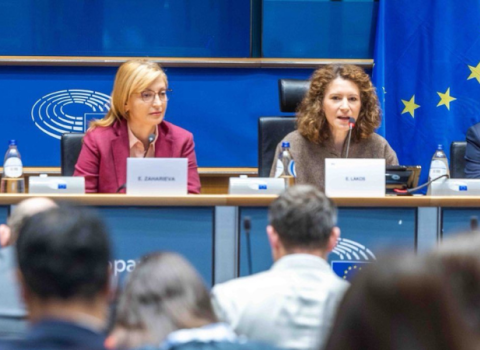The European Commission is calling on companies to dip into its vast trove of earth observation data as the basis for new apps, and to strengthen Europe’s position in the increasingly competitive global space industry.
All the data and images captured by Europe’s Sentinel earth-observation satellites are free for anyone to use, and could drive myriad applications, ranging from flood forecasting models to iceberg mapping systems, water-resource management and transport infrastructure planning. The satellites beam down several terabytes of raw data per day.
But so far, private investment is not rushing in. “There’s not many who have used it, to be honest,” said a Commission official yesterday, as a new plan to encourage commercial use was adopted by the EU. “The data is massive and still relatively new.”
Public sector agencies have been more eager. Earlier this month, US officials used the satellites to track Hurricane Matthew, which battered the south east of the country.
In August, satellite images were used to produce damage assessment maps over the areas affected by the earthquake in Italy, which killed over 300 people.
Last year, 350 people were rescued by coastguards after satellites helped to spot four flimsy rubber dinghies leaving the coast of Libya. Sentinel images also helped Greek authorities seize a ship smuggling 60 million cigarettes after tracking a suspect vessel.
“We need imagination from the private sector. There’s still the perception that this data is for ‘the space people’,” the Commission official said.
The Commission will hold special bootcamps to publicise the data and there will be new tools to make the data more accessible and user-friendly.
Announcing the new push, Commission Vice-President Maroš Šefčovič, said the US space sector was “dynamic” and he wants the EU to keep a hold of its space experts, who could be offered jobs in other parts of the world.
The Commissioner called for others to follow the lead of those who have already turned Sentinel data into new tools.
For example, German firm CloudEo created FieldSense, which offers farmers weekly updates on the health of their crops.
Viridian Raven, jointly developed by two Dutch graduates, Lisa Broekhuizen and Wendy Mensink, makes maps for foresters that calculate risk-zones for bark beetle outbreaks.
Maps made by Astrosat, a British satellite company, provide information on drainage capabilities and failures within flood management infrastructures, both during events and in post-event analysis.
Galileo and Govsatcom
The EU will spend €12 billion on space projects in 2014-2020.
Alongside the Sentinel satellites, it will continue investing in the Galileo global satellite navigation system, which is projected to improve positioning and timing information for driverless cars, railways and planes.
The Commission will also develop a government satellite communications (Govsatcom) programme that in principle would join up the military satellite telecommunications of EU countries.
This will be financed mainly via the EU’s new defence fund, which will also back drone, cyber defence and maritime surveillance research.





 A unique international forum for public research organisations and companies to connect their external engagement with strategic interests around their R&D system.
A unique international forum for public research organisations and companies to connect their external engagement with strategic interests around their R&D system.